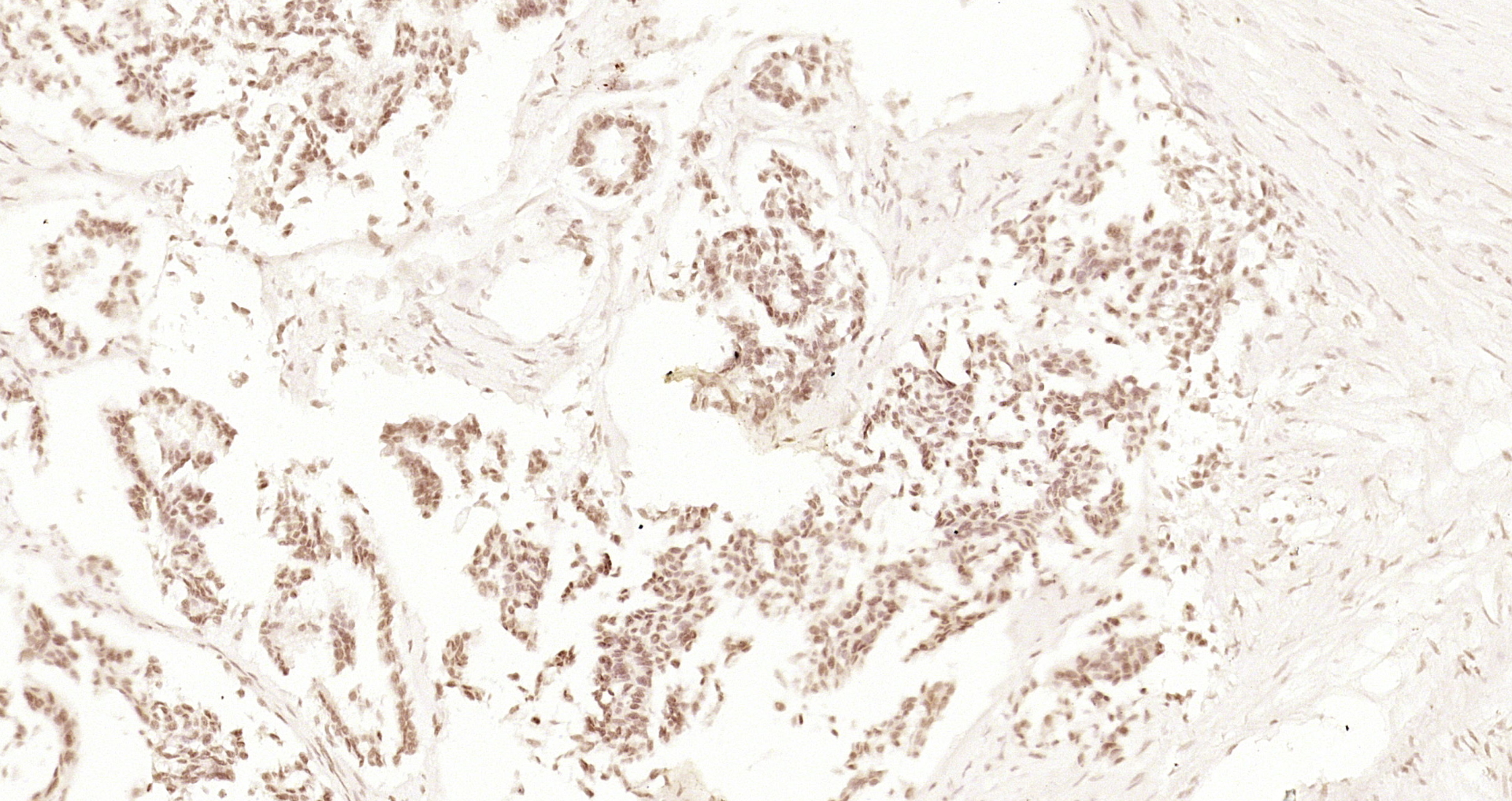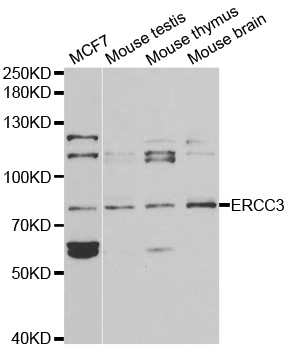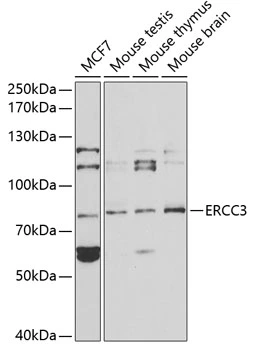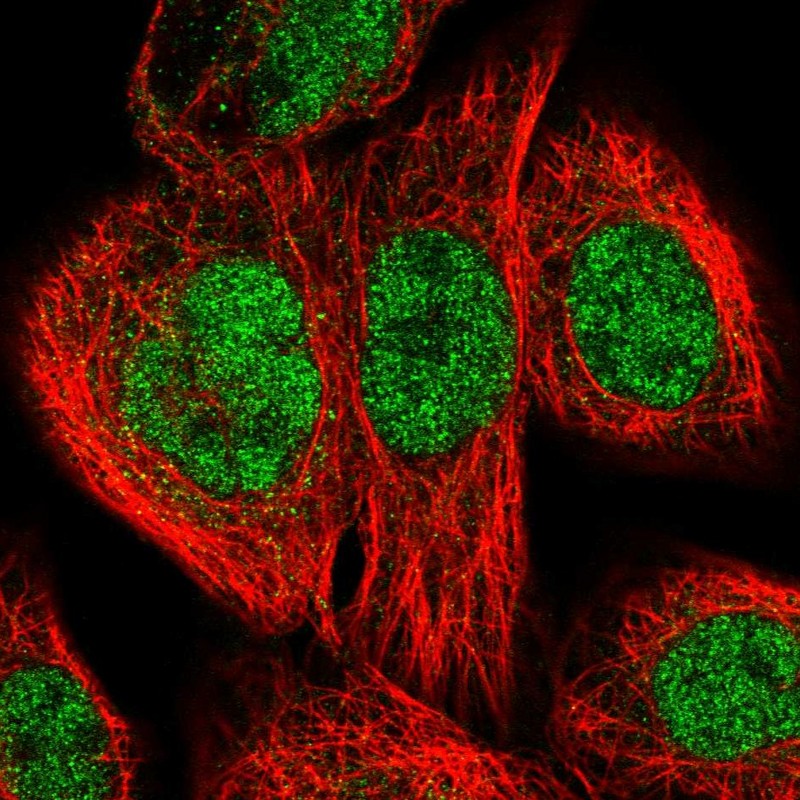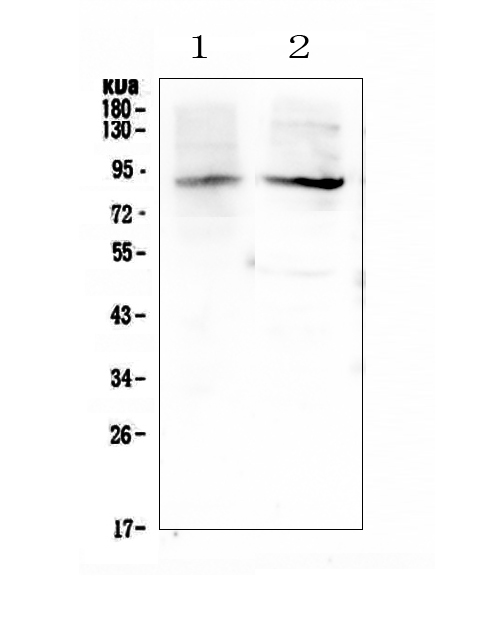XPB antibody
GTX70311
ApplicationsImmunoFluorescence, Western Blot, ImmunoCytoChemistry
Product group Antibodies
TargetERCC3
Overview
- SupplierGeneTex
- Product NameXPB antibody
- Delivery Days Customer9
- Application Supplier NoteFor WB: Use at a dilution of 1:500 and incubate at RT for 40 minutes. Blocking solution: 3% Milk/TBST at RT for one hour. Optimal dilutions/concentrations should be determined by the researcher.
- ApplicationsImmunoFluorescence, Western Blot, ImmunoCytoChemistry
- CertificationResearch Use Only
- ClonalityPolyclonal
- Concentration1 mg/ml
- ConjugateUnconjugated
- Gene ID2071
- Target nameERCC3
- Target descriptionERCC excision repair 3, TFIIH core complex helicase subunit
- Target synonymsBTF2, GTF2H, RAD25, Ssl2, TFIIH, TTD2, XPB, general transcription and DNA repair factor IIH helicase/translocase subunit XPB, BTF2 p89, DNA 3'-5' helicase/translocase XPB, DNA excision repair protein ERCC-3, DNA repair helicase, DNA repair protein complementing XP-B cells, TFIIH 89 kDa subunit, TFIIH basal transcription factor complex 89 kDa subunit, TFIIH basal transcription factor complex helicase XPB subunit, TFIIH p89, TFIIH subunit XPB, basic transcription factor 2 89 kDa subunit, excision repair cross-complementation group 3, excision repair cross-complementing rodent repair deficiency, complementation group 3, general transcription and DNA repair factor IIH helicase subunit XPB, xeroderma pigmentosum group B-complementing protein, xeroderma pigmentosum, complementation group B
- HostRabbit
- IsotypeIgG
- Protein IDP19447
- Protein NameGeneral transcription and DNA repair factor IIH helicase/translocase subunit XPB
- Scientific DescriptionThis gene encodes an ATP-dependent DNA helicase that functions in nucleotide excision repair. The encoded protein is a subunit of basal transcription factor 2 (TFIIH) and, therefore, also functions in class II transcription. Mutations in this gene are associated with Xeroderma pigmentosum B, Cockaynes syndrome, and trichothiodystrophy. Alternative splicing results in multiple transcript variants. [provided by RefSeq, Dec 2014]
- Storage Instruction-20°C or -80°C,2°C to 8°C
- UNSPSC12352203

